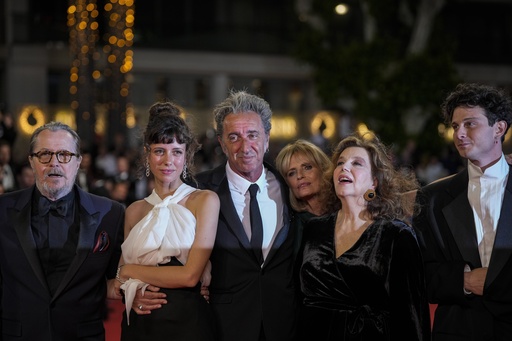
ROME — When director Paolo Sorrentino released his acclaimed series “The Young Pope” in 2016, it took the Vatican a year to reluctantly endorse his artistic vision of the papacy. However, Sorrentino’s latest production, “Parthenope,” has not received such a warm reception from Italy’s Catholic Church, which has issued a swift condemnation of the film.
Despite this pushback, the controversy surrounding “Parthenope” has seemingly only fueled public interest, propelling it to the forefront of the Italian box office following its theatrical launch last month.
Set against the backdrop of Sorrentino’s beloved Naples, the film serves as a rich exploration of themes such as beauty, love, and mortality, drawing inspiration from the ancient Greek myth of Parthenope—a siren who ultimately succumbs to despair after failing to lure Odysseus with her enchanting song. The connection between Parthenope and Naples is deeply rooted; the city is often affectionately referred to as “Partenope,” with its inhabitants known as “Partenopei.”
While the film is not centered around the church, it includes a scene toward the end that has drawn significant ire from religious figures. This particular moment includes a cardinal, the alluring character of Parthenope, and a controversial depiction of the blood of San Gennaro—a miracle thought to be revered by many in Naples.
Notable Italian clergy members have expressed their dismay at the film’s sacrilegious portrayal, stating that it not only disrespects their faith but also tarnishes the city’s reputation. The Catholic bishops’ newspaper, Avvenire, criticized the “sterile aesthetics” of the scene, branding it as “poor taste.” In a scathing review, the publication remarked that Sorrentino’s previous engagement with the Catholic themes in “The Young Pope” has descended into further absurdity with “Parthenope.”
Monsignor Vincenzo De Gregorio, custodian of the chapel housing San Gennaro’s blood, admitted he had not viewed the film in full but deemed the clips he had seen sufficient for a negative judgment. He emphasized that while he recognized his criticism might amplify the film’s publicity, he was primarily troubled by what he termed the “superficial” interpretation of the miraculous blood liquefaction tied to San Gennaro—an enduring enigma for the people of Naples.
According to local lore, the miracle of liquefaction is reminiscent of the volcanic eruption of Mt. Vesuvius in 1631, when the blood supposedly liquefied and halted the molten flow from the volcano before reaching the city. Today, San Gennaro is often beseeched for protection, and the sacred event draws thousands of devoted followers three times a year.
“Certainly, Sorrentino did not set out to create a documentary or perform a comprehensive historical analysis of Naples. Instead, he aimed to capture its dreamlike essence, which is fundamentally what it embodies,” remarked De Gregorio in an interview.
Sorrentino, who won an Oscar for his lush portrayal of Rome in “The Great Beauty,” expressed his dedication to portraying the relationship between Parthenope, the sea, and Naples in a profound manner. He described Parthenope as a “free, spontaneous woman who does not judge—mirroring the city itself”—during a press conference at Cannes, where “Parthenope” premiered to a standing ovation earlier this year.
The film has garnered acclaim, with the cinematographer Daria d’Antonio receiving the festival’s technical award. Recently, reports emerged of T-shirts sporting slogans like “I love Sorrentino” and “I love Parthenope” making their rounds in Naples, alongside Christmas figurines inspired by one of the film’s characters—another testament to its impact.
Sorrentino himself has been met with admiration from fans seeking selfies and autographs during special screenings in Palermo, Sicily. This film adds to the growing cinematic interest in Naples, which was also featured in the HBO series “My Brilliant Friend,” adapted from Elena Ferrante’s popular novels.
In addition to “Parthenope,” Sorrentino’s earlier film, “The Hand of God,” also centered on Naples, showcasing yet another cultural icon—Maradona. His previous work, “The Young Pope,” starring Jude Law, captivated audiences with its unconventional take on the papacy, followed by the sequel “The New Pope” with John Malkovich.
One year after the HBO series aired in Italy, Vatican newspaper L’Osservatore Romano eventually offered a lukewarm review of “The Young Pope,” acknowledging its “frivolous,” “caustic,” and “grotesque” treatment of Vatican life. However, L’Osservatore Romano has yet to comment on “Parthenope.”
The Vatican remains a popular subject for filmmakers, with numerous recent productions exploring the theme of the papacy, including Nanni Moretti’s “Habemus Papam” and Netflix’s “The Two Popes,” in addition to the recent “Conclave” starring Ralph Fiennes.
